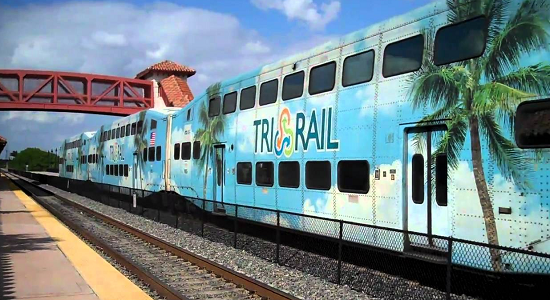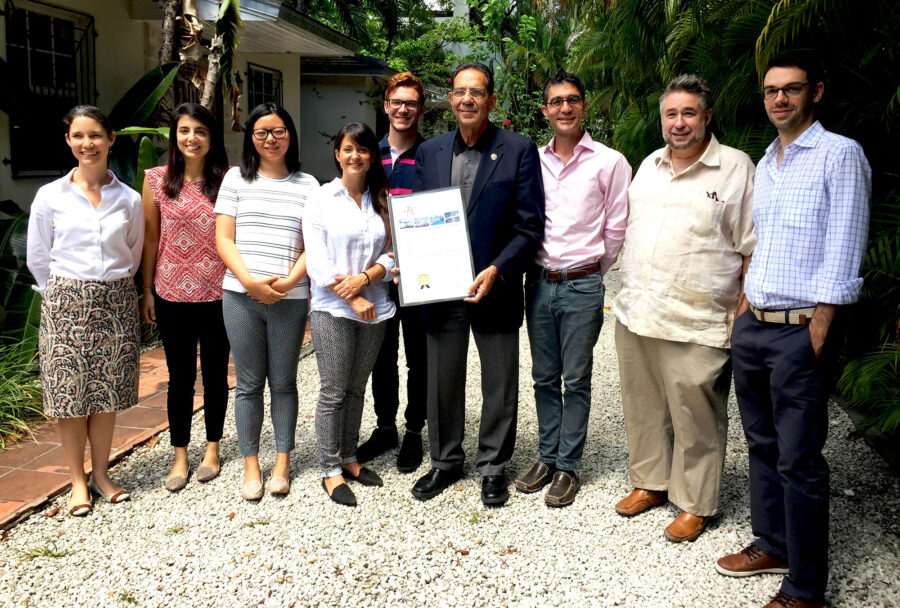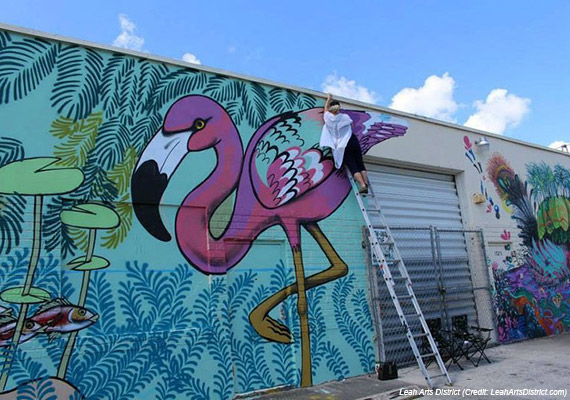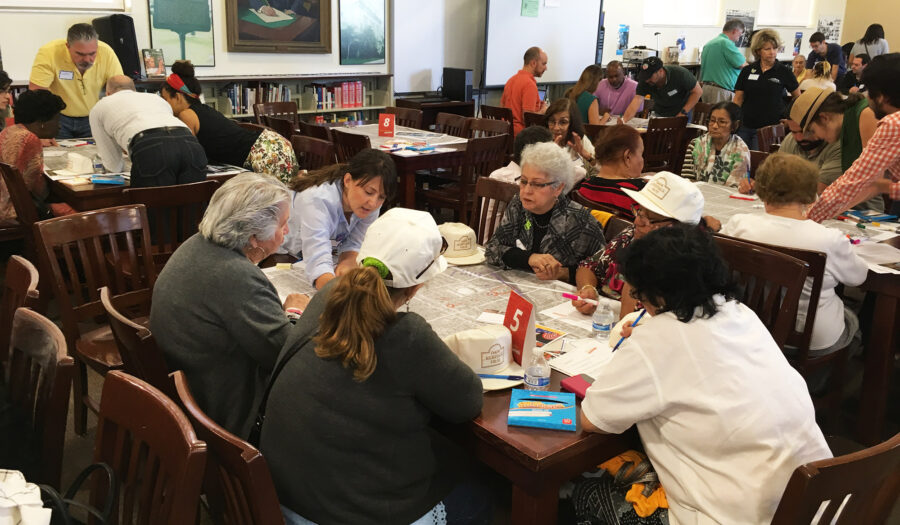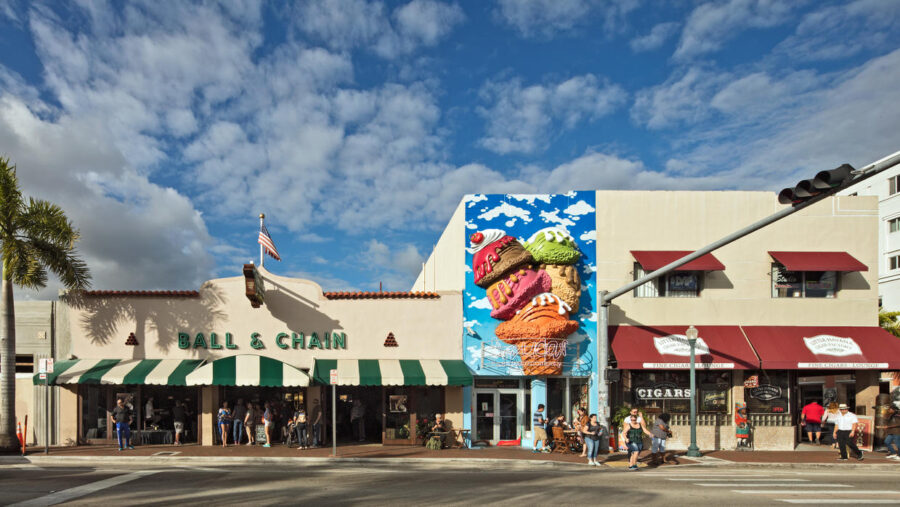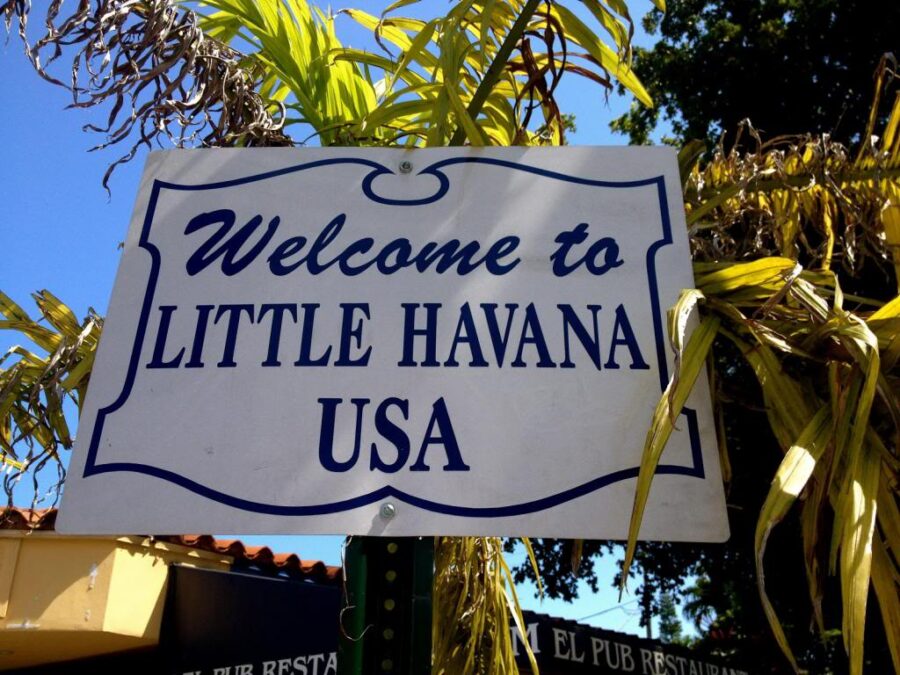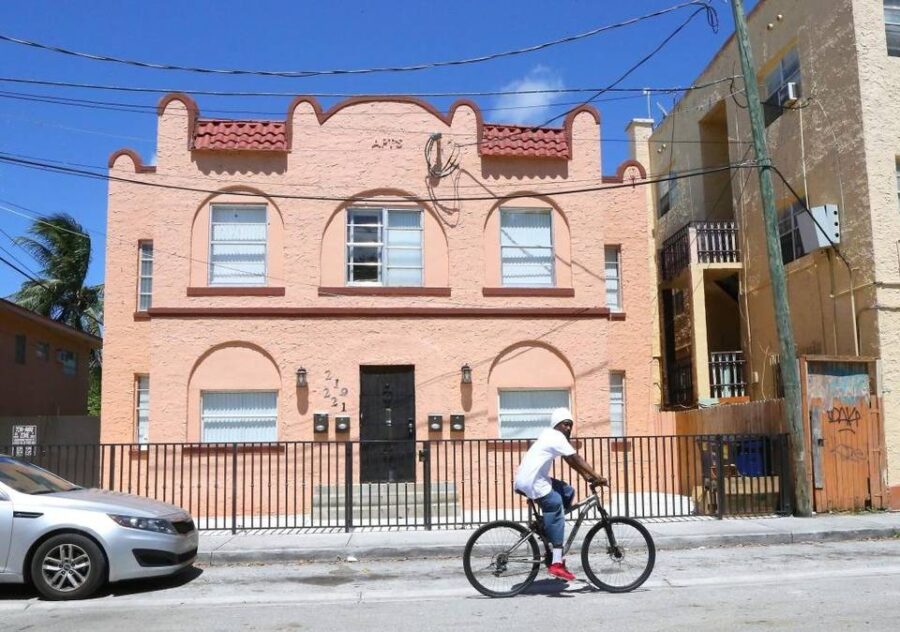our
news
AWARDS, ACCOLADES, PUBLICATIONS AND NEWS.
PlusUrbia’s Juan Mullerat presented “Complete Districts – a New Placemaking Practice” to the South Florida Regional Transportation Authority’s Planning Technical Advisory Committee. SFRTA is the agency that operates Tri-Rail.The concept focuses on a network of clean, safe, but unique streets that together create a Complete District. Simply put, cities are a balance between public and private land, entities, enterprises and services. This balance is symbiotic where all elements are part of a system and they depend on each other to function. It is only when all are well-tuned and calibrated that they make great places.The concept of Complete Districts creates this balanced equation by taking a holistic approach that couples the public with the private realms. It was conceived and formulated by PlusUrbia Design’s team while working through workshops and design exercises for a number of Transit Oriented Developments (TOD) and award-winning District Revitalization projects that created compact, mixed-use, vibrant districts.For more information on Complete Districts, please visit: https://plusurbia.com/project/complete-districts/
PlusUrbia was gratified to welcome Commissioner Xavier L. Suarez to its studio this morning. Commissioner Suarez presented a Proclamation recognizing PlusUrbia Design and its partners for being honored with the American Planning Association's National Award for Economic Development Planning, the highest achievement in our profession.Thank you Commissioner Suarez for taking the time to visit our office and sharing your vision of a prosperous, transit-rich, well-planned Miami.
City and county approved a new community redevelopment agency for 121 acres in east HialeahMarch 17, 2017 04:30PMBy Francisco AlvaradoA long-neglected industrial and manufacturing district in Hialeah could serve as a catalyst for new commercial and residential development in the blue collar, predominantly Hispanic city, according to elected officials.Hialeah Mayor Carlos Hernandez and City Councilman Paul Hernandez (no relation) discussed their efforts to attract transit-oriented, mixed-use projects and create an arts district in the east side of the city, during a luncheon on Thursday hosted by the Commercial Industrial Association of South Florida.The goal is to create a community where millennials can afford to live, work and play, Carlos Hernandez said. “In Miami-Dade, we haven’t built for the younger generation the last few years,” he said. “It has all been dedicated to building for the investors. If we don’t start building for the millennials, they are going to leave.”His city could be the answer to Miami-Dade’s lack of affordable workforce housing for young adults, he said. “I think Hialeah is the perfect place for that market,” Carlos Hernandez said. “This is something that the private sector has to work with us on.”To get developers interested in the area, the city and the Miami-Dade County Commission approved a new community redevelopment agency for 121 acres in east Hialeah so tax dollars are redistributed to public and private projects within the CRA boundaries. In the heart of the CRA’s area is the Hialeah Market Tri-Rail Station at 1200 Southeast 11th Avenue, which sits on an 462,363 square foot predominantly vacant lot.The city also approved master plans for transit-oriented developments near Hialeah Market Station and Tri-Rail/Metrorail Transfer Station at 1125 East 25th Street. Designed by PlusUrbia, the plans call for more residential and commercial projects, pedestrian-friendly streets, enhanced public space, taller building heights and reduced parking requirements. As a result, two developers have already submitted plans.The first, Bridge Crossings, is a seven-story mixed-use project totaling 71,116 square feet with 74 apartments and 1,100 square feet of ground-floor retail, about a block north from the transfer station linking Tri-Rail and Metrorail. The 22,318-square-foot former lumber yard is owned by A&B 2701 Investment LLC, which paid $85,000 for the property in 2014.Mitchell Sabina’s MS Development and L. Michael Osman are teaming up on a proposed six-story development a block west of Market Station and across from a Home Depot. The developers paid $1.8 million for the 1.14-acre site in 2014. Called Apogean Pointe, the project would entail 59 apartments, nine live-work units, 4,000 square feet of commercial space and 102 surface parking spaces.Paul Hernandez recapped his initiative to create the Leah Arts District, a swath of industrial warehouses and car shops in east Hialeah that can be converted to live and work spaces for artists priced out of Wynwood and other emerging neighborhoods in Miami. He pointed out the popularity of Flamingo Plaza, a shopping center offering a milieu of thrift stores and discount outlets popular with Miami millennials, as a driving force behind his idea.Commercial brokers who specialize in Hialeah said sales for industrial and light manufacturing properties are on an upswing, but leasing rates are stagnant. “Sales prices have continued to climb and we’ve sold properties in the $70, $80 and $90 a square foot range,” said Joel Kattan, a senior advisor with Sperry Van Ness Commercial Realty. “However, rental rates don’t seem to be moving up quite as much as sales. Rents seem to be hovering around $6.50 a square foot.”Kattan represented the seller of a 31,000 square-foot warehouse who got $96 a square foot. Located at 1395 East 11th Avenue in the Leah Arts District, the property is now home to Unbranded Brewing, a new craft beer joint set to open later this year. Link to article: The Real DealFor more information on the Hialeah TODs, please visit: https://plusurbia.com/project/hialeah-transit-oriented-development/
Plusurbia hopes to complete a final draft of the master plan by JulyMarch 14, 2017 12:45PMBy Francisco AlvaradoAs new development creeps into Little Havana, a master plan is in the works aimed at preserving the historic character and the pre-World War II architecture in Miami’s most famous neighborhood.On Saturday morning, more than 100 residents and merchants participated in a community workshop at Miami Senior High School to formulate big picture ideas for the master plan, which is being developed by urban planning firm Plusurbia Design in conjunction with the National Trust for Historic Preservation, Dade Heritage Trust and Live Healthy Little Havana.A majority of the participants reached consensus on restoring and reusing historic buildings, ensuring new construction is contextual and compatible with Little Havana, creating more affordable housing, community and cultural centers and making the neighborhood more pedestrian and bicycle-friendly.“At the end of the morning, we asked each table to give us their big ideas,” Megan McLaughlin, the project planning leader for Plusurbia, said. “We are going to use those to guide our reports and our suggestions to the city.”Plusurbia hopes to complete a final draft of the master plan by July, McLaughlin said. “We would present it to the city for them to consider,” she said. “The goal is to come up with heights, density, setbacks and floor lot ratios that matches what is there and is respectful of what is there.”More than a year ago, the national trust began efforts to designate Little Havana a national treasure, an honor that was officially bestowed in late January, McLaughlin said. At the time the designation was made, Live Healthy Little Havana awarded grants for the Plusurbia master plan and a streets plan being developed by Urban Health Partnerships. “The grant allows us to look at what zoning could be that is compatible with the existing neighborhood and allows healthy new development,” she said.Little Havana’s proximity to the urban core is making the neighborhood an attractive alternative for investors and developers, many buoyed by Greystar’s $89 million purchase late last year of the InTown apartment complex developed by Astor Companies. Nearby, a company controlled by Ana V. and Pedro O. Rodriguez has been approved to build a 12-story, 96-unit residential building at 45 Southwest Eighth Avenue that will also include 44,525 square feet of commercial space, 311 parking spaces and 15 bicycle parking spaces.During the workshop, PlusUrbia founder and director Juan Mullerat told attendees Little Havana hasn’t experienced the level of real estate development seen in Brickell, Edgewater and Wynwood because of the city’s zoning code, Miami 21.“Unfortunately, it has not led to much improvement in Little Havana,” Mullerat said. “We haven’t seen much investment in Little Havana, yet it is the second most dense neighborhood in Miami-Dade County.”The master plan would strike a balance between encouraging new development while giving property owners and developers incentives to preserve and renovate Little Havana’s signature three-story apartment buildings from the 1920s. “They are very unique,” Mulleret said. “You can’t find them anywhere else.”Lee Hernandez, a Little Havana homeowner since 1977, said the neighborhood needs an infusion of urbanism from Flagler Street to Northwest Fifth Street, between Northwest Fifth Avenue and Northwest 12th Avenue. “That area needs to be revitalized,” she said. “We need more greenery, we need more open spaces, and we need more places where people feel safe.”Hernandez said she would welcome rational development in Little Havana. “Developers are investing slowly, but surely,” she said. “I would like to see urbanization with consciousness. We don’t want skyscrapers. We need to keep the flavor.” Link to article: The Real DealMore information about the workshop: Little Havana Me Importa
By Jeana WiserThe sensory experience of walking the streets of Miami’s Little Havana neighborhood is unforgettable. The layered histories, the rich cultural expression, and the colorful architecture underscore the importance of this unique neighborhood. I am proud to say that the National Trust added historic Little Havana to our growing portfolio of National Treasures in January 2017. Not only is the historic neighborhood a new National Treasure but it is also an excellent example of our recent thinking about ReUrbanism. We are very proud to be working alongside strong partners in Little Havana to ensure that it remains thriving, healthy, and livable.A neighborhood store in Little Havana. | Credit: Steven Brooke StudiosThe National Trust first formally recognized the importance of Little Havana in 2015, listing it as one of that year’s 11 Most Endangered Places. At the time, Little Havana was threatened by a proposed zoning change that would have increased the likelihood of large-scale, new buildings noticeably out of scale with the existing human-oriented neighborhood. (Since then, support for the proposed up-zoning has subsided although the future of the neighborhood remains uncertain in the absence of a coordinated, smart, and contextual planning approach.)Building on the momentum following the 2015 11 Most announcement, the National Trust formed an internal team and, along with our local partner Dade Heritage Trust, began listening to and learning from Little Havana residents, property owners, civic leaders, and government officials. In those meetings, we learned about:Little Havana’s built environment—historic, human scale, and very close to downtown jobs;the concerns of Little Havana’s residents, including affordability and displacement; andthe broad and diverse cohorts of people dedicated to revitalizing Little Havana through building reuse; retrofit; and contextual, human-scale infill.Historic apartment building in Little Havana. | Credit: Steven Brooke StudiosUnveiling a National TreasureOn January 27, we launched the Little Havana National Treasure campaign with a morning press event that included remarks from Miami Mayor Tomás Regalado, City Commissioners Frank Carollo and Francis Suarez, Dade Heritage Trust’s Chris Rupp, PlusUrbia Design’s Juan Mullerat, local developer Bill Fuller, and the National Trust’s President and CEO Stephanie Meeks.Following the press event, we toured the neighborhood with the media, visiting three sites. Each tour stop was selected to illustrate a unique facet of Little Havana’s importance:high–Character Score blocks;bodegas and other neighborhood retail integrated with residential uses;successful examples of renovated historic courtyard apartments; andThe signature metric of the National Trust’s Preservation Green Lab, the Character Score encapsulates three key characteristics of the built environment: the median age of buildings; the diversity, or mix, of old and new buildings; and the granularity, or smallness, of the built fabric. These three metrics were drawn from the seminal ideas of Jane Jacobs, the renowned urbanist and author of “The Death and Life of Great American Cities.” Little Havana has many of Miami’s highest–Character Score blocks (shown in red) where there are concentrations of older, smaller, and mixed-age buildings.On the evening of the announcement, the National Trust and our partners staffed an interactive booth at Viernes Culturales, a monthly cultural festival that draws thousands to Calle Ocho, Little Havana’s cultural tourism hub. At the booth, passersby were invited to fill out notecards indicating what historic places in the community matter most to them. The responses were displayed for all to see, and participants were invited to spin a prize wheel to win Little Havana–themed giveaways.Notecards at Viernes Culturales. | Credit: Sehila CasperMessaging Through MapsBy all standards, the Little Havana Treasure announcement was a success. We raised awareness among international, national, and local audiences of little Little Havana as:a symbol of inclusiveness and a testament to the immigrant spirit that built our nation;dynamic, culturally rich, and affordable; andhistoric—more than 70 percent of its existing built fabric is more than 50 years old.The Preservation Green Lab’s research contributed to both messaging and context setting, in part through the use of maps.Blocks of modest, older, smaller buildings in Little Havana have the same level of population density as the nearby towers of Brickell—but in Little Havana, that density is contained in historic, human-scale buildings. In fact, the densest blocks of Little Havana have more than 40,000 residents per square mile, roughly 2.5 times the average density of San Francisco. More than half of Miami’s 100 densest blocks are located in Little Havana.Media outlets ranging from “The Miami Times” to Telemundo to the Associated Press attended the launch, spoke with our partners, and participated in the media tour. CNN captured a quote from Stephanie Meeks:“The National Trust welcomes the urban resurgence that is breathing new life into cities across the country, but we also believe that growth should not come at the expense of the vibrant historic neighborhoods like Little Havana that make cities unique and desirable places. As we work to preserve and celebrate Little Havana, we want to make sure it remains a healthy, vital and affordable urban neighborhood.”Little Havana is home to immigrants from all over Latin America and the world. It is one of four neighborhoods in Miami where more than 40,000 foreign-born residents live and one of three neighborhoods where more than 70 percent of the population was born abroad. The average block in Little Havana has more than 200 foreign-born residents, which is nearly three times the average density of immigrants citywide.Planning in Little HavanaThe National Trust is now beginning a neighborhood master planning process, in partnership with PlusUrbia Design, Dade Heritage Trust, and Live Healthy, Little Havana. We will co-convene public workshops, thematic and targeted focus groups, and continued one-on-one conversations with key stakeholders to gather more public input and information. The process of planning a healthy and vibrant future for this historic neighborhood will leverage the expertise and capacities of the National Trust. We will continue to use mapping and Preservation Green Lab analysis to inform the planning and outreach processes. We also intend to promote a broad range of tools to:Facilitate the rehabilitation and reuse of older and historic buildings;Enable the design and construction of contextual new buildings; andStrike a balance between the reuse of the older building stock and smart, contextual new development.Working with our local partners, we will publish a report and set of recommendations in July 2017. The materials will be available in both English and Spanish, and we will leverage them to inform decision-makers and empower stakeholders. We are looking forward to the next six months.Jeana Wiser is the senior manager of resilient communities at the National Trust’s Preservation Green Lab. Link to article: Saving Places
Watch Juan Mullerat and Megan McLaughlin's interview on PBS below or visit http://www.pbs.org/video/2365949292/
El barrio que acogió al exilio cubano y sigue siendo un punto receptor de migrantes y turistas acaba de ser declarado Tesoro Nacional. Por delante hay un plan de revitalización de sus calles y edificios y un reto: que las nuevas construcciones no acaben con su carácter ni echen a los vecinos de toda la vida.La Calle 8 se ha revitalizado en los últimos años como un punto recepción de turistas en Miami. Cortesía National Trust For Historic PreservationPor: Lorena ArroyoPublicado: ene 28, 2017 | 12:01 AM ESTMIAMI, Florida.- Olvídense del cafecito cubano, la salsa, los puros y el dominó. Más allá de los atractivos turísticos de la Calle 8, la Pequeña Habana está atrayendo cada vez más las miradas de quienes ven en las calles de este emblemático y céntrico barrio de Miami una oportunidad de desarrollo urbanístico.Ante el temor de que las grúas y el cemento derrumben el carácter único que le han dado durante décadas generaciones de inmigrantes, la Pequeña Habana fue nombrada este viernes Tesoro Nacional de Estados Unidos con una importante tarea por delante: que los planes urbanísticos que buscan revitalizarlo puedan conservar los edificios históricos y no supongan el desplazamiento de los residentes actuales.El objetivo del proyecto de revitalización de la Pequeña Habana es que no se pierda el carácter arquitectónico ni social del barrio.Cortesía National Trust for Historic Preservation "La Pequeña Habana es la Ellis Island de Miami, el lugar de llegada y establecimiento de muchos inmigrantes. La historia de estas calles es la historia de EEUU: hombres y mujeres que llegan en búsqueda de una mejor vida y trabajando duro para ellos y sus familias", afirmó Stephanie Meeks, la presidenta de National Trust for Historic Preservation (NTHP), una organización que trabaja en la conservación de lugares históricos.Como sucedía con la isla de Nueva York donde se inscribían los millones de europeos que llegaron en barcos a EEUU, este barrio de casas antiguas y pequeños edificios de apartamentos ha sido el lugar de acogida de las oleadas de exiliados cubanos desde los años 60 y de numerosos inmigrantes centroamericanos, principalmente nicaragüenses, en las últimas décadas. Hoy en día, el 70% de sus habitantes nació fuera de EEUU y el 98% es de origen hispano."Mientras buscamos conservar y celebrar la diversidad de la Pequeña Habana, queremos asegurarnos que sigue siendo un barrio próspero, enérgico y asequible", afirmó Seeks.¿Viejos y nuevos vecinos?Su organización, que en 2015 incluyó al barrio como uno de los lugares históricos de EEUU con más peligro de desaparecer, conoce bien las amenazas a las que se enfrenta.Y aunque el anuncio del nombramiento de la Pequeña Habana como Tesoro Nacional en el teatro Manuel Artime comenzó como un acto de celebración de la diversidad con la presencia de políticos, urbanistas, empresarios y periodistas, no tardó en chocar con la realidad.Fue cuando, durante un tour por la ciudad en el que la NTHP presentaba a los medios su plan a largo plazo para revitalizar la Pequeña Habana junto a sus aliados (la fundación Dade Heritage Trust, el estudio de arquitectos y urbanistas PlusUrbia Design, y la organización Live Healthy Little Havana), una vecina irrumpió en la conversación.Ally DiVizio, en la imagen pidiendo un cafecito en una ventana de un pequeño comercio, teme que los planes urbanísticos echen del barrio a los vecinos que llevan años ahí. Lorena Arroyo "Ustedes no saben cómo es este barrio y lo que pasó hace unos siete años... Downtown y Brickell se lo compraron", afirmó la mujer, que se identificó como Ally DiVizio, en referencia a dos barrios aledaños que han mostrado un rápido crecimiento urbanístico en los últimos años."Los comisionados vienen aquí todo el tiempo y, ¿qué han hecho? ¡Nada! Todo lo que quieren hacer es más construcciones hacia este lado y echan a la gente que no puede permitirse una renta aquí porque siguen subiendo los precios", añadió, visiblemente molesta.Ante sus quejas, Juan Mullerat, un arquitecto y urbanista que dirige Plusurbia, una de las firmas que trabaja en el plan de revitalización del barrio, invitó a la mujer a participar en algunas de las reuniones y grupos de discusión que pretenden hacer con la comunidad.Una apuesta para la ciudad"La idea es traer la suficiente gente como para saber cuál es la manera en la que tenemos que diseñar para que el futuro de la Pequeña Habana no solo sea contextual con la manera con la que está hoy, sino que también atraiga nuevas fuentes económicas y de inversión", le explicó después Mullerat a Univision Noticias. "La gente tiene que ser la propietaria del plan maestro, no nosotros"."La comodidad es la Pequeña Habana", se puede leer en el edificio que construye Andrew Frey. Lynne Sladky / AP Y aunque el temor de DiVizio a que La Pequeña Habana sufra un proceso de gentrificación puede entenderse solo con levantar la vista y ver el barrio enormes grúas de construcción para construir rascacielos en los vecindarios aledaños, el plan de la NTHP y sus aliados contempla buscar formas de incentivar el desarrollo local y la movilidad social para que los vecinos de toda la vida y los recién llegados puedan seguir conviviendo.Según el estudio que hicieron estas organizaciones, pese a ocupar el 7% de la superficie de Miami, el barrio tiene cerca del 20% de las viviendas de alquiler de la ciudad y más de una cuarta parte de las alquiladas por menos de 1,000 dólares mensuales."El 80% de la gente de la Pequeña Habana vive de alquiler porque las viviendas son baratas, pero con la reiversión, con la construcción que hay acá, esto no es sostenible. Nuestro estudio es en conjunto con el National Trust para poder mantener los edificios existentes y con la ciudad de Miami para encontrar métodos tanto económicos como sociales para mantener el tipo de vivienda que hay aquí hoy", explica el director de Plusurbia.Eso implica desde ayudas del gobierno local para hacer las viviendas más asequibles a los vecinos de menos ingresos a incentivos para que los promotores mantengan los precios bajos o reducir el costo de la construcción al hacer, por ejemplo, edificios pequeños sin parqueo.Frey apuesta por construir edificios sin parqueo. Lorena Arroyo Eso es lo que está haciendo Andrew Frey, un desarrollador urbanístico que está construyendo en el barrio. Aunque a muchos en Miami les pueda parecer una locura, el edificio boutique de ocho apartamentos que levanta en la Pequeña Habana no tendrá espacio para aparcar autos.Y es que, el proyecto de barrio impulsado que impulsan National Trust y sus aliados incluye nuevas ideas de urbanismo como que las ciudades son para las personas y no para los autos o que cada comunidad tiene tiene historias y lugares que importan y hay que respetarlos."Nosotros no ofrecemos piscina, gimnasio ni spa", explica orgulloso Frey. "La Pequeña Habana tiene historia, cultura. Tiene gente real y una narrativa que no puedes controlar", añade.Enlace: UNIVISION NOTICIAS Artículos relacionados: Agencia EFE, MARTÍ NOTICIAS (Miami), El Nuevo Herald (Miami)#1, El Nuevo Herald (Miami) #2, Telemundo Miami, Diario de Cuba, Cuba en Miami, Miami News 24
Union with the National Trust for Historic Preservation, Dade Heritage Trust and Live Healthy Little launches long-term planning process to create a thriving, healthy and livable community.Nation’s Leading Historic Preservation Organization Names Miami’s Little Havana a National TreasurePress Release | Miami, Florida | January 27, 2017Author: Virgil McDillNational Trust for Historic Preservation Also Unveils New Research Underscoring Little Havana’s Affordability, Population Density and Opportunities for GrowthMiami’s Little Havana—a neighborhood that stands as a testament to the immigrant spirit that built America and a place that remains a dynamic, culturally rich, and affordable neighborhood—was today named a National Treasure by the National Trust for Historic Preservation. In partnership with Dade Heritage Trust, PlusUrbia Design, and Live Healthy Little Havana, the National Trust is today launching a long-term planning process that seeks to work with neighborhood residents, civic leaders, and local partners to ensure that Little Havana can remain a thriving, healthy and livable community that embraces its past while planning for a brighter future. Despite Little Havana’s significance and its continued role as a home to thousands of Miamians, the neighborhood currently faces a range of threats, including development pressure, demolition of historic buildings, displacement of existing residents, and zoning changes that could impact its affordability, cultural richness, and character. To address these threats, the Trust is launching a planning process to work with neighborhood residents and other stakeholders on solutions that encourage continued growth while preserving the neighborhood’s unique character.The National Trust’s experience and research demonstrates that the rehabilitation and reuse of older and historic buildings is a key to revitalizing urban neighborhoods for the benefit of residents. Building on this, the Trust recently launched an initiative called ReUrbanism that emphasizes the many ways that creatively reusing older buildings can benefit communities. For example, ReUrbanism research in Little Havana suggests that a strategy based on preservation could retain the character, density, scale and affordability that have long defined Little Havana. Key findings include:Blocks of modest older, smaller buildings in Little Havana have the same level of population density as the nearby towers of Brickell, but in Little Havana, these levels of population density are contained in historic, human-scale buildings.More than half of Miami’s 100 most densely populated city blocks are located in Little Havana.Miami’s greatest concentrations of rental housing in general and affordable rental housing in particular are found in Little Havana. Though Little Havana takes up about seven percent of Miami’s land area, it contains close to 20 percent of the city’s rental housing stock and more than a quarter of the city’s housing rented for less than $1,000 per month.Little Havana is host to thousands of small businesses and hundreds of women and minority-owned businesses. The commercial corridors of Little Havana—Calle Ocho, 12th Avenue, Flagler, and others—have some of the city’s highest concentrations of such businesses.“Little Havana is a symbol of the immigrant experience in America and a thriving, entirely unique place that thousands of people currently call home,” said Stephanie Meeks, president and CEO of the National Trust for Historic Preservation. “The National Trust welcomes the urban resurgence that is breathing new life into cities across the country, but we also believe that growth should not come at the expense of the vibrant historic neighborhoods like Little Havana that make cities unique and desirable places. As we work to preserve and celebrate Little Havana, we want to make sure it remains a healthy, vital, and affordable urban neighborhood.”"As we work to preserve and celebrate Little Havana, we want to make sure it remains a healthy, vital, and affordable urban neighborhood.”“This historic designation enshrines the diverse culture and history of Little Havana,” said City of Miami Mayor Tomas Regalado. “Little Havana has been the destination for hundreds of thousands of Latin American immigrants since the 1960s seeking the promise of a new life in America. This national recognition confirms the neighborhood’s cultural significance in the immigrant experience.”"This partnership represents an opportunity to protect and strengthen one of the most authentic neighborhoods in America,” said Juan Mullerat, Director at Plus Urbia Design. “With development pressures encroaching from Brickell and Downtown and a zoning code that often favors tear down and replacement with out-of-scale superblock development, we are at risk of losing the rich cultural heritage of Little Havana. Little Havana is Miami's heart and soul, but it is in critical need of a visionary approach to planning and development. Today marks the beginning of people-focused contextual urban design that will preserve and invigorate this diverse urban neighborhood." “As Miami continues to evolve, preservation will be essential in maintaining Miami’s unique urban neighborhoods,” said Christine Rupp, Executive Director of Dade Heritage Trust. “Dade Heritage Trust will continue to work with our partners to inform residents and property owners about the cultural and financial benefits of preservation. Our long-term goal is to protect specific historic properties that tell the story of Little Havana and assist with the restoration of those historic buildings to ensure that Little Havana maintains its urban, multi-cultural heritage and vibe. The historic fabric in Little Havana is amazing. 1930's bungalows, 1920's central hallway apartment buildings, coral rock homes, early Miami wood frame houses and even Art Deco apartment buildings exist within the neighborhood. The preservation of this neighborhood has so many positives from saving these structures that represent different eras in Miami's history to ensuring working class people can remain in this urban, highly desirable area.”"Today marks the beginning of people-focused contextual urban design that will preserve and invigorate this diverse urban neighborhood."Additional Background on Little HavanaLittle Havana’s story is at the heart of the American experience. From its earliest days as a streetcar suburb, to its iconic role as a haven for Cuban Americans, to its more recent role as a home to immigrants from Central America and the Caribbean, Little Havana has been shaped by people striving to build a better life for themselves and their families. To this day, visitors to the neighborhood can experience a thriving neighborhood that is truly one-of-a-kind. The neighborhood’s unique buildings—local variations of recognized types like the bungalow, center hallway walk-up apartments, and small commercial buildings housing mom-and-pop stores—have served generations of residents who have adapted them to fit their needs. The Trust’s research suggests that these character-rich historic buildings can play an essential role in the future growth of Little Havana.https://savingplaces.org/places/little-havanaAbout The National Trust for Historic PreservationThe National Trust for Historic Preservation, a privately funded nonprofit organization, works to save America’s historic places.www.savingplaces.org About National TreasuresThe National Trust for Historic Preservation mobilizes its more than 60 years of expertise and resources to protect a growing portfolio of National Treasures that are threatened buildings; neighborhoods, communities, and landscapes that stand at risk across the country. Our National Treasures program demonstrates the value of preservation by taking direct action to protect these places and promote their history and significance.https://savingplaces.org/national-treasures#.WIuC-bYrKV4About Dade Heritage TrustDade Heritage Trust is a non-profit 501c3 organization founded in 1972. The mission of the organization is to preserve Miami-Dade County's architectural, environmental and cultural heritage through education and advocacy. Dade Heritage Trust is funded through memberships, private contributions, grants and public programming proceeds.For more information, call Christine Rupp, Executive Director, at 305-358-9572 or visit dadeheritagetrust.org.About Live Healthy Little HavanaLive Healthy Little Havana is an initiative coordinated by the City of Miami and supported by the Health Foundation of South Florida to promote healthier living in Little Havana. The goal is to strengthen community capacity to collaboratively plan and collectively carryout strategies to improve health. Residents and employees of Little Havana expressed concerns about the well-being of residents within the community at meetings and have identified health impact areas: physical activity, primary care, mental health & substance abuse and nutrition. LHLH has a focus placed on strategies that will foster changes in policy, systems, or the environment, with an emphasis on sustainability.https://www.livehealthylittlehavana.comLink to press release at National Trust for Historic Preservation website: NTHP Press ReleaseRelated articles: CNN, Curbed Miami, Miami Herald, AFP (Agence France-Presse), ABC Miami, CBS Miami, Christian Science Monitor, Florida Politics, Miami Agent, SKIFT (Travel Industry)
Upzoning of East Little Havana scrapped as Miami planners go back to drawing boardBY DAVID SMILEYdsmiley@miamiherald.comA view of an apartment building considered in 2015 for historic preservation in Little Havana. David Santiago El Nuevo Herald Once seemingly on the fast-track to approval, controversial legislation designed to spur growth in East Little Havana has been scrapped amid concerns that it would gentrify the storied community and displace its predominantly poor, immigrant residents.During Thursday’s meeting of the Miami Commission, city planners will nix plans to up-zone 32 blocks by withdrawing a proposal that first surfaced more than two years ago. The legislation, proffered to renew investment in a working-class neighborhood by allowing for taller, denser development, received tentative approval from Miami commissioners in early 2015. The state approved the measure but amid pushback from activists and preservationists, it disappeared from the political radar.The proposal finally resurfaced this week, only to be pulled. Francisco Garcia, Miami’s planning director, said the department concluded that the proposal still needed work, and had become too polarizing.“We found it very difficult to overcome the perception that this would result in displacement,” Garcia said.But the death of the rezoning proposal does not mean the end of efforts to jump-start development. Rather, it marks the beginning of a new direction. The neighborhood, despite pockets of vacant lots and run-down apartments, remains alluring to real estate interests.Garcia said it’s likely the city will continue to look at increasing density by considering allowing more units per acre, but pull back on discussions about increasing height. Planners also will look at new design regulations. "THERE’S A LOT OF INTEREST IN LITTLE HAVANA. IT’S MIAMI’S ELLIS ISLAND"Juan Mullerat, director of PlusUrbia“There’s a lot of interest in Little Havana. It’s Miami’s Ellis Island,” said Juan Mullerat, director of the Miami design firm PlusUrbia, which has an active interest in Little Havana. “It’s an incredible melting pot that requires a high level of attention to make sure we get right whatever it is we’re going to do there.’’A group of business owners pushing to create a Little Havana Business Improvement District would like to emulate Wynwood business owners, who with the help of PlusUrbia, created design and zoning guidelines for the neighborhood.Meanwhile, Dade Heritage Trust is pushing to expand preservation efforts in Little Havana, which is filled with dozens of notable buildings from the early- and mid-20th century. The city created the neighborhood’s first historic district in 2015; it was the same year the National Trust for Historic Preservation placed East Little Havana on its list of America’s 11 most endangered communities. Coincidentally, the city is withdrawing its up-zoning proposal one day before the National Trust, the country’s principal preservation organization, is expected to announce new involvement in the neighborhood at a press conference in Little Havana.“Any future legislation will have input from the National Historic Trust,” said Mayor Tomás Regalado, who declined to discuss the details of Friday’s event.Going forward, Garcia said his department will continue to study the area to draw up new regulations. City planners will also monitor the results of new city legislation that, if approved next month, would allow developers who set aside affordable housing residential units to potentially double the number of units allowed.“We thought all would be better served by postponing the up-zoning, and reining it in through an appropriate set of design standards and guidelines,” said Garcia. “We’re going to give this a chance and see how it develops.”Read more here:http://www.miamiherald.com/news/local/community/miami-dade/little-havana/article128557334.html#storylink=cpy
Ocho de las diez ciudades donde más personas mueren atropelladas al caminar por la calle están en Florida. Miami ocupa el número once en la lista elaborada por la organización Smart Growth America. Pero, tras los datos grises, hay motivos para el optimismo.Una joven camina por delante de un grafitti con una calavera en Wynwood, Miami. | Eduardo Muñoz Álvarez / Getty ImagesPor: Lorena ArroyoPublicado: ene 12, 2017 | 01:01 PM ESTMIAMI, Florida.- No debería, pero caminar en Florida puede ser considerado un deporte de riesgo. Así lo refleja un informe publicado esta semana por la organización Smart Growth America que sitúa a ocho áreas metropolitanas del estado del sol entre las más peligrosas de Estados Unidos para los peatones.Según el informe Dangerous by Design, entre 2005 y 2015 murieron 5,142 viandantes atropellados en las calles del estado, o lo que es lo mismo: 2.66 por cada 100,000 peatones.Los autores elaboraron un "índice de peligrosidad de peatones" al examinar las muertes de peatones en 104 áreas metropolitanas del país y concluyeron que entre la última década en todo Estados Unidos murieron 46,149 personas atropelladas por automóviles mientras caminaban, lo que supone un promedio de 13 personas al día.A la cabeza de la lista está el área metropolitana de Cape Coral-Fort Myers, en la costa sureste, seguido de Palm Bay-Melbourne-Titusville, en la costa este central y Orlando-Kissimmee-Sandford, en el centro. Y salvo dos posiciones, la octava y novena, ocupadas por Jackson (Mississippi) y Memphis (Tennessee), ciudades de Florida completan el 'top ten'.Además, la poblada zona de Miami-Fort Lauderdale-West Palm Beach, en el sureste del estado, ocupa el undécimo lugar de la lista de áreas metropolitanas más peligrosas de EE.UU. para los peatones.El informe cuenta con mapas interactivos en los que se pueden identificar las zonas con más incidentes de atropellos a peatones. En la imagen, el área de Miami. | Dangerous By Design No es una sorpresa que el 'estado del sol' ocupe el primer puesto en el ránking de estados más peligrosos de EE.UU. para peatones", se puede leer en el informe de Smart Growth America.La lista probablemente tampoco sorprende a las personas del estado que cada día tienen que desplazarse a pie por las calles, muchas veces sin aceras y con escasos pasos de peatones que los autos no siempre respetan.Para el arquitecto y urbanista Juan Mullerat, el gran problema en Florida es la "falta de entendimiento entre modos de transporte y el respeto mutuo entre un modo y el otro", algo que achaca a la ausencia de infraestructuras adecuadas y compatibles para cada medio de transporte y la poca promoción del uso del transporte público."Lo más importante es la educación desde la sociedad y lo siguiente sería que municipios y condados empiecen a invertir en la infraestructura, no solamente para resolver estos conflictos, sino para promocionar el transporte público", opina. "Hace falta un cambio de mentalidad y una inversión por parte del gobierno para mover gente y no solamente carros".En eso coinciden los autores del informe al afirmar que mientras las calles estén diseñadas para priorizar a los vehículos que se desplazan a gran velocidad, las muertes de peatones seguirán ocurriendo: "Conforme la población de la nación va envejeciendo y se hace más diversa racial y económicamente, la necesidad de mejoras al respecto será cada vez un mayor reto", añaden. Hay motivos para ser optimistas"Todo el mundo implicado en el proceso de diseño vial, desde los legisladores federales a los líderes electos locales y los encargados de transporte, deben tomar acciones para acabar con las muertes de peatones", indica el informe.Peatones cruzan una calle en Miami Beach, una zona ocupa el lugar número 11 del país en la lista de las áreas metropolitanas más peligrosas para los viandantes. | Getty Images. Pero pese a las malas noticias para Florida, los autores del informe detectaron buenas señales en el 'estado del sol' al señalar que desde 2009, el Departamento de Transporte estatal "ha adoptado medidas para reducir las muertes de peatones".No son los únicos que ven un futuro más optimista para los viandantes del estado. El informe Foot Traffic Ahead que elabora anualmente la Universidad de George Washington y mide los espacios amigables para los peatones en las 30 mayores ciudades de EEUU señala a Miami como una de las cinco urbes con mejores perspectivas para quienes se desplazan a pie.El urbanista Juan Mullerat también comparte la ola de optimismo y ve muchas señales positivas de que el futuro de Miami será mucho más caminable. "Yo la verdad es que no estaría aquí si no fuera porque veo buenas expectativas para el futuro. Es mi trabajo el realizar este tipo de proyectos, así que estamos muy esperanzados porque vemos que esta inversión está ocurriendo, que los municipios se están empezando a dar cuenta de la necesidad del espacio público", apunta.De hecho, la empresa que dirige, Plusurbia, está desarrollando varios proyectos con áreas peatonales en los barrios de Hialeah y la Pequeña Habana de Miami."Estamos en un momento clave para poder proporcionar nuevos medios de transporte para los ciudadanos aquí en el sur de la Florida. Es un momento muy emocionante", afirma al mencionar proyectos como los trolleys que se recorren barrios y ciudades del condado.Sin embargo, reconoce que los cambios no son suficientes: "Estamos muy por detrás de lo que una ciudad como Miami necesita pero estoy contento por los pequeños cambios que, por pequeños que sean, son avances y poco a poco se vaya haciendo la suficiente inversión como para no necesitar el coche cada vez que nos tenemos que mover". Enlace: UNIVISION NOTICIAS
We use cookies
We use our own and third-party cookies to be able to correctly offer you all the functionalities of the website for analytical purposes. You can accept all cookies by clicking "Accept cookies", obtain more information in our
Website Policyor configure/reject their use by clicking on Settings".
Accept cookies
SettingsBasic cookie informationConfirm preferences
This website uses cookies and/or similar technologies that store and retrieve information when you browse. In general, these technologies can serve very different purposes, such as, for example, recognizing you as a user, obtaining information about your browsing habits or customizing the way in which the content is displayed. The specific uses we make of these technologies are described below. By default, all cookies are disabled, except for the technical ones, which are necessary for the website to work. If you wish to expand the information or exercise your data protection rights, you can consult our Website Policy.
Accept cookiesManage preferencesTechnical and/or necessary cookies
Always active
Technical cookies are those that facilitate user navigation and the use of the different options or services offered by the web such as identifying the session, allowing access to certain areas, filling in forms, storing language preferences, security, facilitating functionalities. (videos, social networks…).
Analytic Cookies
Analysis cookies are those used to carry out anonymous analysis of the behavior of web users and that allow user activity to be measured and navigation profiles to be created with the objective of improving websites.
